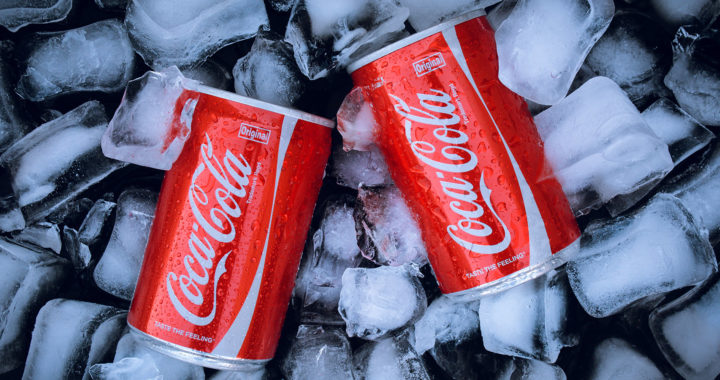The Coca-Cola Company is one of those business success stories that demonstrate the internationalization and globalization of American business. However, despite its established brand and global presence, its existence hangs by a thread. The market it serves and the industry in which it operates are by old and new competition, as well as the ever-changing consumer preference and ever-evolving business and macroeconomic landscape.
Industry Analysis: Porter’s Five Forces Analysis of The Coca-Cola Company
1. Industry or Competitive Rivalry
Coca-Cola specifically serves a monopolistic market structure characterized by the presence of other multinational and local companies offering similar products and even substitute products. It also operates within the global beverage industry which is populated by different product sub-categories that fall under the general beverage product category.
Nevertheless, the company is known for its flagship product, “Coke”, and other soft drink beverages such as the “Sprite” brand. Its direct competitors are other soft drink manufacturers such as PepsiCo. It is also important to note that it has expanded its product portfolio to include teas, alcoholic beverages, and healthier alternatives.
Both Coca-Cola and PepsiCo. have dominated the soft drinks market and the entire beverage industry. These two companies have invested heavily in marketing and specific promotion strategies aimed at reaching more customers further and maintaining their presence or the recognizability of their respective brands.
Competition remains intense. There are other companies offering similar and substitute products in the market. There are geographic markets with competitive beverage manufacturers. For example, in China, Hangzhou Wahaha Group dominates the Chinese market and has become the third-largest beverage manufacturer in the world.
2. Threat of Substitutes
Remember that the beverage industry alone is diverse and the specific soft drinks market competes with other beverages. Soft drink products are competing with other categories of beverages including energy drinks and herbal drinks, as well as coffees and teas, alcoholic beverages, and even bottled water products.
Coca-Cola, for its part, has already dealt with this issue by expanding its product offerings beyond soft drinks to address the impact of substitute products. It now manufactures and sells a range of beverage products under different brands. Still, it cannot be denied that its soft drinks business remains a key growth factor and the main income driver.
3. Threat of New Entrants
Understanding further how The Coca-Cola Company fares in the market it serves or the industry in which it operates requires looking at the barriers to entry and the degree to which new entrants can pose a threat. Note that manufacturing has become more accessible. Several brands have also outsourced their manufacturing capabilities to third-party manufacturers.
It is still hard to topple established companies. However, as exemplified by Hangzhou Wahaha Group and its Future Cola brand, market entry can be done by exploiting the untapped or neglected market. Furthermore, as exemplified by product substitutes, entry can be done by offering or innovating new products based on market trends.
4. Bargaining Power of Buyers
The fact that the competition in the market and industry remains intense and that the threats from product substitutes and new entrants are present grant consumers with higher bargaining power. For example, become of the presence of similar products in the market, Coca-Cola cannot set the prices of its soft drinks too high without turning off its consumers.
Consumers can also be sensitive to price. Note that beverage manufacturers sell non-staple products to the mass market. The purchasing power of the consumers within this market is exposed to macroeconomic risks. Economic downturns or short-lived slowdowns can affect their capabilities to purchase non-essential goods and services.
Another factor contributing to the higher bargaining power of consumers is health awareness. Sweetened and processed beverages such as soft drinks have been linked to different diseases such as diabetes and cardiovascular conditions. Beverage manufacturers are either forced to offer healthier choices or cut off the prices of their products.
5. Bargaining Power of Suppliers
Concocting a beverage requires assembling a supply chain consisting of suppliers of food ingredients and other additives. It is however important to note that an established company such as Coca-Cola will not have a hard time with its suppliers due to its existing relationship, as well as the existence of competition among the suppliers themselves.
Remember that there are numerous players within the beverage industry and specific soft drinks market. The production inputs of this industry are also similar to the inputs used in the greater food and beverage industry and its specific markets. The landscape has brought forth an abundance of different suppliers from different parts of the world.
The size of Coca-Cola also lowers the bargaining power of its existing suppliers. Transacting with the largest player in the market translate to a lucrative business. The costs that a supplier will incur from foregoing its business relationship with a large company are higher than the costs involved when this large company switches to a different supplier.
Furthermore, considering the abundance of suppliers or the high supplier-to-firm concentration ratio in the industry, a particular supplier does not have the monopoly to dictate the price or volume of supplies in the market. The competition among these suppliers drives down the prices of supplies or costs of production inputs.





